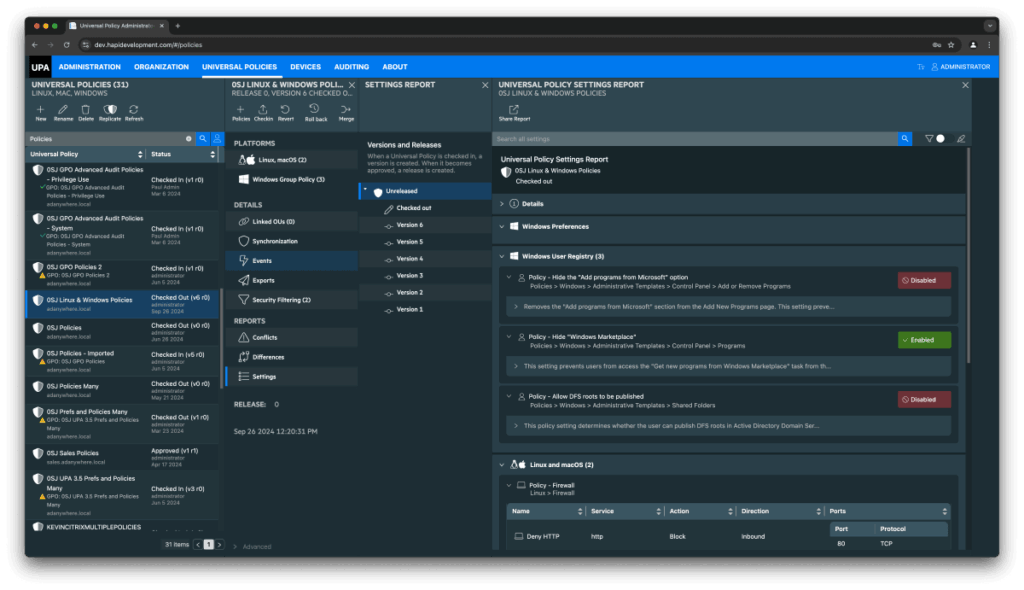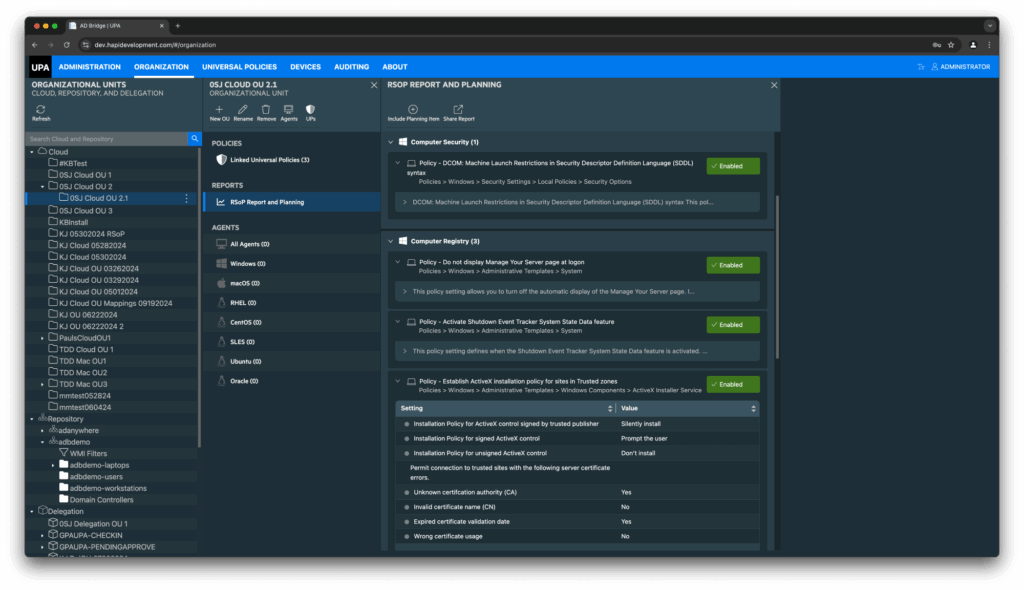
As enterprises navigate the evolving landscape of IT infrastructure management, a significant milestone approaches that demands immediate attention: Microsoft’s Advanced Group Policy Management (AGPM) will reach its end-of-life on April 14, 20261. After this date, Microsoft will cease providing security updates, non-security updates, and support for AGPM, leaving organizations vulnerable to cybersecurity risks if they continue using this critical tool.
This transition comes at a time when Group Policy Objects (GPOs) remain fundamental to enterprise IT operations. According to recent research, despite the shift toward cloud technologies, 78% of enterprises still rely on Active Directory, with Forrester predicting that a majority will maintain hybrid environments for years to come. This widespread dependence on GPOs, combined with AGPM’s impending end-of-life, creates an urgent need for a robust, forward-looking solution.
Enter Full Armor’s Universal Policy Administrator (UPA), a next-generation platform designed to address the complexities of modern GPO management while overcoming the limitations of traditional tools. UPA represents a significant advancement over the Microsoft Management Console (MMC) and legacy Group Policy toolsets, offering several key innovations that position it as the ideal solution for enterprise policy management.
Modern Web-based Interface

First and foremost, UPA provides a web-based console that revolutionizes how administrators interact with GPOs. This modern interface eliminates the common frustrations associated with MMC, such as sluggish performance and connectivity issues when working remotely. The web-based approach ensures seamless access across trusted and untrusted domains/forests, making it particularly valuable for organizations managing complex, distributed environments.
Comprehensive Change Management
One of UPA’s standout features is its comprehensive change management system. Understanding that GPOs are mission-critical, UPA implements a sophisticated workflow that allows organizations to design, test, and validate policies offline before deployment. This approach includes role-based access control, check-in/checkout capabilities, and version control, ensuring that policy changes are thoroughly vetted before reaching production environments.
Detailed Auditing, Extensive Reports

Security and compliance remain paramount concerns for enterprises, and UPA addresses these through robust policy analysis features. Administrators can perform conflict checking, compare policies across domains, and generate Resultant Set of Policy (RSoP) reports. The platform’s detailed auditing capabilities track user sessions and events, providing the transparency needed for regulatory compliance and security governance.
For organizations grappling with the complexity of modern GPO management, UPA offers several additional advantages:
- A centralized location for managing GPO settings across multiple domains
- Automated tools for analyzing and resolving policy conflicts
- PowerShell cmdlets for automation and integration
- Comprehensive support for third-party extensions that follow Microsoft’s standard format
Future-Proof Your Policy Management
As enterprises look beyond AGPM’s end-of-life in 2026, the need for a secure, scalable, and future-proof policy management solution becomes increasingly critical. UPA not only fills the void left by AGPM but provides a foundation for the next 20+ years of enterprise policy management. By combining comprehensive GPO support with modern features and cross-platform capabilities, UPA enables organizations to maintain robust security and compliance while adapting to evolving IT landscapes.
Conclusion
The time to prepare for AGPM’s end-of-life is now. Organizations that proactively transition to UPA will position themselves to manage their infrastructure more effectively while avoiding the security risks associated with unsupported tools. In an era where cybersecurity threats continue to evolve, having a supported, actively maintained policy management solution isn’t just an operational convenience – it’s a strategic necessity.
1 https://learn.microsoft.com/en-us/lifecycle/announcements/mdop-extended
